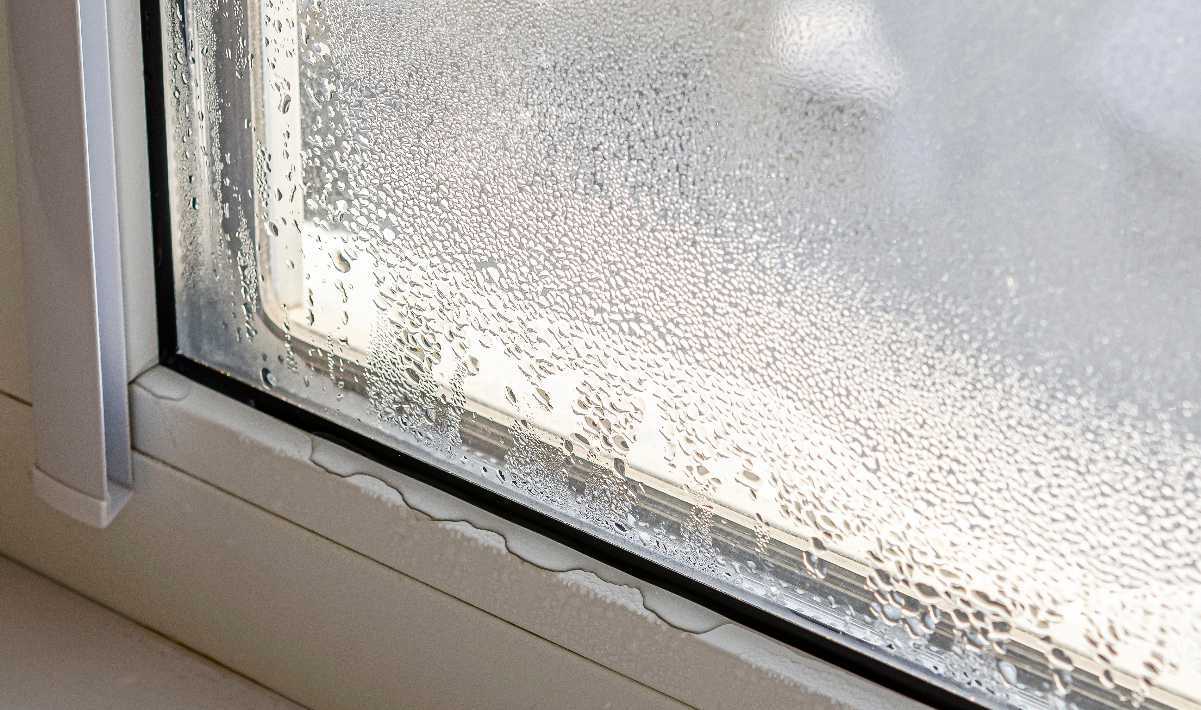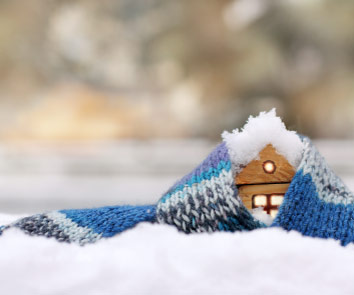Updated October 2023
Many of us might think that the winter months offer a break from the challenge of controlling mold in our homes. Unfortunately, while mold growth does typically slow down when it’s cold it can still cause problems in your home even during the coldest months of the year. Have no fear, this post is here to help you gain a better understanding of how to limit your mold exposure this winter. We’ll look at how mold thrives and preventative measures you can take to prevent mold growth to ensure your home is a healthy living environment.
Understanding Mold and its Causes

Health Risks Associated with Mold
Mold affects the indoor air quality of your home and poses serious risks of health problems, with potential consequences including respiratory problems, allergic reactions, and aggravated asthma symptoms. Mold exposure can also cause skin and eye irritation. Here in Maryland, the significance of local molds is a pressing concern, as they are often found in abundance, making it essential for us as residents to be vigilant in preventing and addressing mold issues to protect the health and well-being of those we love.
Preventative Measures to Limit Mold Growth
Striving to prevent mold growth requires a multifaceted approach. Since it’s not realistic to expect you to keep your home cooled below livable temperatures for mold, the best way to keep it in check is to target moisture. Remember to be diligent about cleaning up moisture wherever you find it, whether it’s a window, a leaky pipe, or a spill on the carpet.
Here are some practical ways to lessen moisture and protect your home from mold problems:
- Maintain local humidity levels between 30-50%, utilizing dehumidifiers and hygrometers to measure and reduce humidity levels.
- Increase ventilation by using effective bathroom and kitchen fans that vent to the outside and opening windows occasionally, especially in older Maryland homes.
- Promptly address leaks with regular inspections and mold-resistant sealants. Repair any water damage ASAP, particularly in attics, basements, or crawl spaces.
- Keep surfaces dry through regular wiping and proper insulation to prevent condensation.
- Adopt proper storage practices, ensuring that items remain dry and elevated to thwart mold growing.
Mold Detection and Removal
Mold growing in your home at some point is likely, but detecting and removing it immediately is crucial for healthy indoor air quality and a safe living environment. Mold can grow very quickly and lead to unpleasant musty odors, visible growth, unexplained allergy symptoms, and potential damage to your drywall and insulation. If you discover a small area of visible mold, clean it with mild detergent and water, but avoid bleach, as it doesn’t prevent mold spores from returning and can be harmful in enclosed spaces. However, if mold is extensive or suspected but not visible, do not delay in consulting a professional mold remediation specialist for safe and effective removal.
Your Partner in a Creating a Mold-Free Home
Preventing mold growth during a Maryland winter necessitates a targeted and proactive approach. By considering our unique regional factors and implementing our Maryland-specific strategies, with a little diligence you can reduce moisture levels throughout your home and successfully safeguard your living spaces against mold infestations. If you do suspect you might have mold problems, contact East Coast Mold Remediation to take care of the issue immediately. Our expert team is dedicated to helping you and your family enjoy a healthy, mold-free living environment throughout every season of the year.
Frequently Asked Questions
- Q: What exactly is mold and how is it different from mildew?
- A: Mold and mildew are both fungi, but mold is usually black or green, while mildew is white or gray.
- Q: Are all molds dangerous to our health?
- A: No, not all molds are harmful. Some are benign, while others can be hazardous, such as black mold (Stachybotrys) which produces mycotoxins that can be particularly harmful to your health.
- Q: How often should I ventilate my home in winter?
- A: Ventilate your home regularly in winter, at least a few times a week, to reduce moisture and prevent mold.
- Q: Are there specific insulation materials that prevent mold growth better than others?
- A: Mold-resistant insulation materials, like closed-cell spray foam or cellulose, are better choices for preventing mold growth.
- Q: How can I prevent mold growth in my bathroom?
- A: Prevent bathroom mold by maintaining good ventilation, keeping surfaces dry, and using mold-resistant paint and caulk.
- Q: How can I distinguish between mold and dirt or dust?
- A: Mold has a fuzzy or slimy texture and comes in various colors, while dirt or dust is dry and solid.
- Q: Is the musty odor always an indication of mold presence?
- A: A musty odor is often associated with mold, but it can also come from other sources like mildew.
- Q: How do home mold testing kits work and how accurate are they?
- A: Home mold testing kits collect air or surface samples for analysis, but their accuracy can vary, and professional testing is more reliable.
- Q: When should I consider hiring a professional for mold inspection?
- A: Consult a professional, such as East Coast Mold Remediation, for mold inspection when you suspect extensive mold, hidden mold, or health concerns arise.




